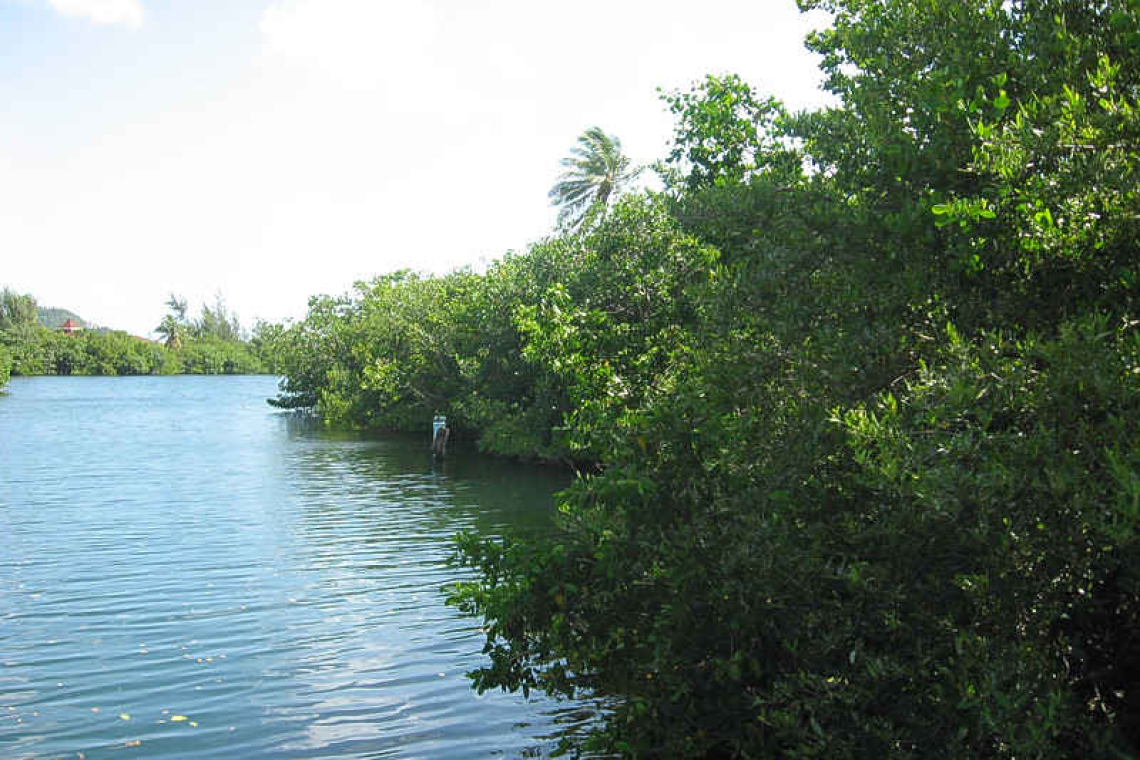Section of Mullet Pond.
PHILIPSBURG--Parliament late Tuesday evening unanimously approved a motion from National Alliance (NA) Member of Parliament (MP) Darryl York urging government to zone Mullet Bay, designate Mullet Pond as a national monument and create a unified beach ordinance, amongst other resolutions.
York tabled the motion during the first round of the public plenary session of Parliament on the draft 2024 budget amendment. In the motion, York urged the Council of Ministers to demonstrate a proactive stance on environmental protection and management, particularly as it relates to coastal and ecologically sensitive areas, by taking visible and enforceable actions.
He urged government, through the Ministry of Public Housing, Environment, Spatial Planning and Infrastructure VROMI, to initiate and implement zoning plan(s) that designate Mullet Bay areas, its coastal lands, as protected zones, with clear restrictions to prevent destructive development in accordance with its RAMSAR listing site no. 2270.
He also urged government to designate Mullet Pond as a National Park to reaffirm the resolution passed in 2013 and to formally secure the Mullet Pond area as a National Park, with explicit protections for its mangroves and marine life, enforcing measures to prevent activities that would compromise its ecological health.
He also called for a unified beach ordinance and urged government to create a comprehensive beach ordinance, unifying policies under VROMI and the Ministry of Tourism, Economic Affairs, Transport and Telecommunication (TEATT), to better regulate construction adjacent to beaches.
He said in the motion that this ordinance should include but not be limited to restricting building heights and density near the beaches, mandating environmental impact assessments for any proposed development within a certain proximity to beach zones and mandating that public access to the beach maintains a width of a minimum of 3 metres, coupled with an accessible walkway.
York’s motion also called for the protection of remaining pond areas such as Welgelegen Pond, better known as Little Bay Pond (adjacent to Bel-Air Hotel); Red Pond at Gibbs Bay; Great Salt Pond; and Fresh Pond.
In the motion, York also called for government to submit to parliament within 30 days an action plan based on the conclusions/recommendation of the study “The Ponds of Sint Maarten, Sustainable Development and Management” and any subsequent official report that assesses the state of the country’s ponds.
York, in the motion, made reference to a motion passed by Parliament in 2013 to protect Mullet Pond and its mangroves as a Nature Park, highlighting its ecological importance and economic value to the island’s environment and tourism.
He said studies like “The Ponds of Sint Maarten” (Ecovision, 1996), the Carrying Capacity Study, and the Tourism Master Plan, along with other reports, have consistently highlighted the significance of preserving St. Maarten’s ponds due to their ecological and environmental value. He said in the motion that historically, St. Maarten had at least 19 ponds, as recorded on maps stored at the Cadastre’s office. By 1995, this number had decreased to 10, and today, fewer than five remain undisturbed.
According to the motion, the current beach policies under the VROMI and TEATT Ministries
lack a cohesive, enforceable ordinance that can effectively regulate construction near beach zones. He stressed in the motion that zoning areas of ecological importance as national parks or protected areas can aid in maintaining the island’s environmental integrity, safeguard public spaces and support sustainable tourism.







